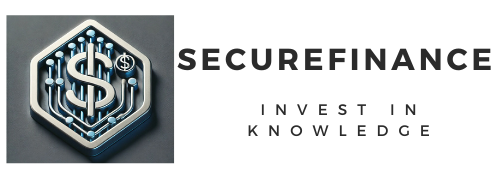
In the world of opulent engines, high-end interiors, and roaring horsepower, owning a luxury car is more than a mode of transportation—it’s a lifestyle choice. But when it comes to luxury car financing, buyers often face a complex decision: Should you dip into your hard-earned savings, opt for a bank loan, or find the perfect mix of both?
As prices for high-end vehicles continue to rise, being savvy with your financing strategy is crucial. You want the thrill of a luxury ride—without the burden of financial regret. This guide explores the most practical, strategic, and expert-backed ways to use your savings and bank loans wisely when buying a luxury car.
Understanding the Rise of Luxury Car Ownership
Over the past decade, luxury car sales have surged globally. From the BMW 7 Series to the Mercedes-Benz S-Class, consumers aren’t just buying cars—they’re buying experiences. This surge has been fueled by easier access to financing, attractive leasing options, and an increase in high-net-worth individuals.
However, with rising inflation, fluctuating interest rates, and economic uncertainty, even wealthy buyers are thinking twice about how they finance their next ride.
What Makes Luxury Car Financing Different?
Luxury car financing differs significantly from traditional auto loans. Banks scrutinize the borrower’s income, existing liabilities, and long-term debt servicing ability more thoroughly. Additionally, luxury cars depreciate differently, which can affect the loan-to-value ratio and terms offered by financial institutions.
Moreover, financing high-ticket vehicles often comes with hidden costs—think insurance premiums, extended warranties, and higher interest rates. Understanding these nuances is key before stepping into a dealership.
Should You Use Your Savings to Buy a Luxury Car?
Using your savings may feel like the safest bet—you avoid interest, gain immediate ownership, and dodge monthly payments. But this strategy has its pitfalls:
-
Liquidity Concerns: Tying up large amounts in a depreciating asset may limit your flexibility in emergencies.
-
Opportunity Cost: Could that cash generate higher returns in stocks or real estate?
-
Depreciation Impact: Luxury cars lose value fast. Paying outright may not align with smart investment logic.
Still, if your emergency fund is untouched and the car is part of a lifestyle choice, partial savings use may make sense—especially as a down payment.
When Is It Better to Use a Bank Loan?
Financing through a bank can be an attractive option if:
-
You qualify for low-interest rates.
-
Your investments are yielding strong returns (making it better to leave savings untouched).
-
You need to maintain liquidity for business or personal plans.
Opting for a bank loan also builds credit when payments are made on time and allows buyers to invest their savings elsewhere for potential growth.
Understanding Interest Rates on Auto Loans
Interest rates for luxury vehicles vary more widely than for economy cars. Premium vehicles are often subject to slightly higher rates unless you qualify for promotional financing or have stellar credit. Fixed-rate loans provide predictability, while variable rates might offer initial savings but pose future risks.
The Role of Down Payments in Luxury Car Financing
Lenders usually require 10–20% down for standard car loans. For luxury vehicles, however, larger down payments—up to 30%—might be required to reduce risk. A healthy down payment decreases your monthly obligation, improves loan terms, and minimizes the total interest paid over time.
Tip: A larger down payment also shields you from being “upside down” in your loan if the car depreciates faster than you repay it.
Using Online Loan Calculators for Accurate Planning
Online loan calculators are your best friend when planning your luxury car financing. These tools allow you to simulate different scenarios—like changing your down payment, adjusting the loan term, or toggling the interest rate. The goal? Find the perfect balance where monthly payments stay within budget, and you’re not drowning in long-term debt.
Tip: Always include insurance, taxes, and maintenance costs in your calculations for a realistic picture.
Comparing Loan Offers from Banks and Credit Unions
Not all loan offers are created equal. While traditional banks may have more rigid criteria, credit unions often provide lower rates and flexible terms, especially to members. Additionally, online lenders are rising in popularity for their convenience and competitive pricing.
Make it a rule to compare at least three offers before signing on the dotted line. Even a 1% difference in interest can save thousands over the life of the loan.
Tips to Negotiate Better Loan Terms
When financing a luxury car, negotiation doesn’t stop at the dealership. Here’s how to improve your loan terms:
-
Improve your credit score before applying.
-
Get pre-approved to strengthen your position.
-
Negotiate the loan term—shorter terms may mean higher payments, but less interest overall.
-
Avoid unnecessary add-ons like insurance bundles, extended warranties, or GAP coverage—unless needed.
Pro tip: Use competing offers as leverage with lenders.
The Importance of Credit Scores in Luxury Car Loans
Your credit score plays a pivotal role in the loan approval process. Lenders view a high score as a sign of reliability, qualifying you for lower interest rates, better terms, and larger loan amounts. Typically, a score above 720 opens most doors, while those under 650 may face hurdles.
Building Your Credit Before Applying
If your score is in the red zone, here are ways to fix it:
-
Pay down high credit card balances.
-
Avoid new credit inquiries.
-
Make all payments on time.
-
Dispute inaccuracies on your credit report.
Improving your credit even by 30 points can drastically improve your loan prospects.
Is Dealer Financing a Good Option?
Dealer financing is convenient, but not always cost-effective. While some luxury brands offer promotional rates (like 0% APR), others may add hidden markups. Captive lenders (like Mercedes-Benz Financial) might provide brand-specific benefits, but may also tie you to strict conditions.
It’s smart to bring your own pre-approved loan and let the dealer match—or beat—it.
Hidden Costs in Luxury Car Ownership
The sticker price is just the beginning. With luxury cars come premium costs:
-
Higher insurance premiums
-
Luxury vehicle taxes in certain states
-
Expensive maintenance (think $500+ oil changes)
-
Premium gas requirements
Always factor in these variables when calculating affordability.
Balancing Car Dreams with Retirement Goals
A $120,000 vehicle might feel thrilling, but how does it affect your long-term wealth? Consider the opportunity cost of investing that money instead. Could it contribute to your 401(k), build real estate equity, or fund a child’s college tuition?
Some advisors suggest spending no more than 15% of your annual income on a car. If you exceed this, you may risk compromising your bigger financial picture.
Investment vs Depreciation: The Real Cost of Luxury Cars
Luxury cars depreciate quickly—up to 30% in the first year alone. Unlike real estate or stocks, they rarely appreciate unless they become collectible. If you must spend on a depreciating asset, financing it wisely mitigates long-term losses.
You Can Also Read : Banking Tips to Help You Afford a Lamborghini, Ferrari, or Rolls-Royce
Financial Advisors’ Take on Car Loans
Many certified financial planners recommend using loans to retain liquidity—as long as you qualify for competitive rates. Their main caveat? Keep total debt manageable and don’t treat luxury cars as investments. Cars lose value; your net worth shouldn’t.
